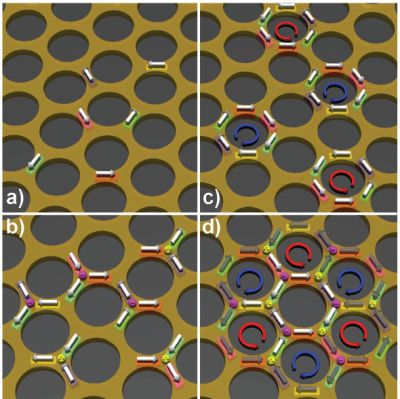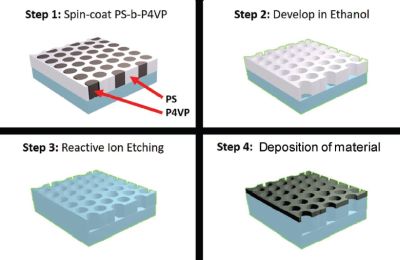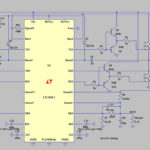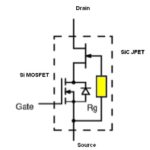A diode that conducts and blocks electrical current magnetically, rather than through an interface between two semiconductors, has been developed at the University of Missouri.

The development comes from a group of physicists led by Deepak K. Singh, associate professor of physics and astronomy at the University of Missouri. The diode is comprised of a two-dimensional, nanostructured material created by depositing a magnetic alloy, or permalloy, on the honeycomb structured template of a silicon surface. The material behaves like a diode without any application of an external magnetic field — magnetic charges in the material itself create the diode effect. What’s interesting about the material is that it dissipates significantly less power during conduction compared to an ordinary semiconducting diode.

lattice reveal the persistence of diode-type rectification at T = 300 K. Center, the electronic behavior, observed in differential conductivity measurements, is independently verified by I–V
characteristics. Characteristic plots of voltage (V) versus current (I) at T = 300. At right, differential conductivity deduced
from the V–I plot, as a function of current bias.
Singh and his colleagues described the work in “Magnetic Diode Behavior at Room Temperature in 2D Honeycombs” and, “Spin Solid versus Magnetic Charge Ordered State in Artificial Honeycomb Lattice of Connected Elements,” both published in Advanced Electronic Materials and Advanced Science. It seems that the diode behavior they saw wasn’t predicted by their theoretical models. “In a surprise, we have found the diode-type rectification in nanostructured 2D honeycomb lattice, made of ultrasmall permalloy (Ni0.81Fe0.19) magnet,” the researchers write. “Electronic measurements on newly fabricated permalloy honeycomb lattice of ultra-small connecting elements (≈12 nm) have revealed unidirectional electrical properties without the application of magnetic field and with the output power of the order of ≈30 nW. In fact, magnetic field application changes the asymmetric behavior into a symmetric phenomenon. In zero field, electrical differential conductivity increases by more than two orders of magnitude for a modest unidirectional current application of ≈10 μA, compared to the negligible value near zero bias. Electronic measurement for the oppositely directed current yields a very small or negligible differential conductivity,” they say in one of the papers.

Judging by comments in two papers, it seems as though the principle of operation of the new material isn’t entirely understood. “The observation of diode-type function in permalloy honeycomb lattice of ultra-small element possibly hints of new and unexplored properties of magnetic charges (monopoles and multipoles) that are argued to exist in this geometrically frustrated system,” the researchers write.
Researchers say they were originally looking at the 2D honeycomb lattice in connection with investigations of spin ice. A spin ice is a magnetic substance with magnetic moments (i.e. spin) as elementary degrees of freedom which are subject to what are called frustrated interactions. Geometrical frustration refers to a phenomenon where, on a regular crystal lattice, conflicting inter-atomic forces lead to a complicated structure. The spin ice moniker comes from the fact that spin ices show low-temperature properties, residual entropy in particular, closely related to those of common crystalline water ice.
Another interesting outcome of the study is that the diode effect was observed at room temperature, not just at super-cold levels. Nevertheless, the researchers say there is a lot of work to be done before you’ll be able to order a magnetic diode from a distributor. For one thing, the diode effect goes away if the lattice is too thick or too thin. The researchers say they are still developing a detailed understanding of the diode behavior they are seeing.






Developed in Missouri, I don’t believe it, SHOW ME!
Wouldn’t wrapping a permanent magnet with a coil of wire be the same effect? Lenz’s law would prevent DC from flowing in one direction then allow it to flow the other direction.